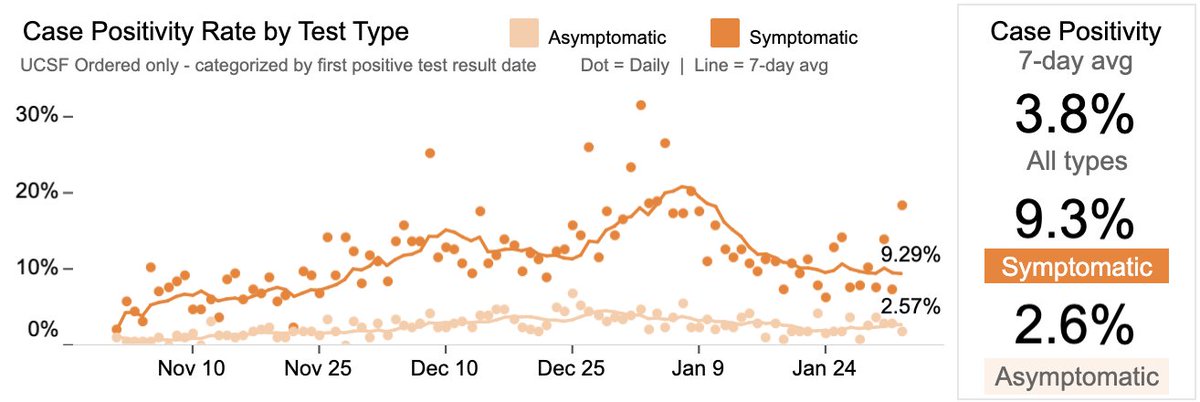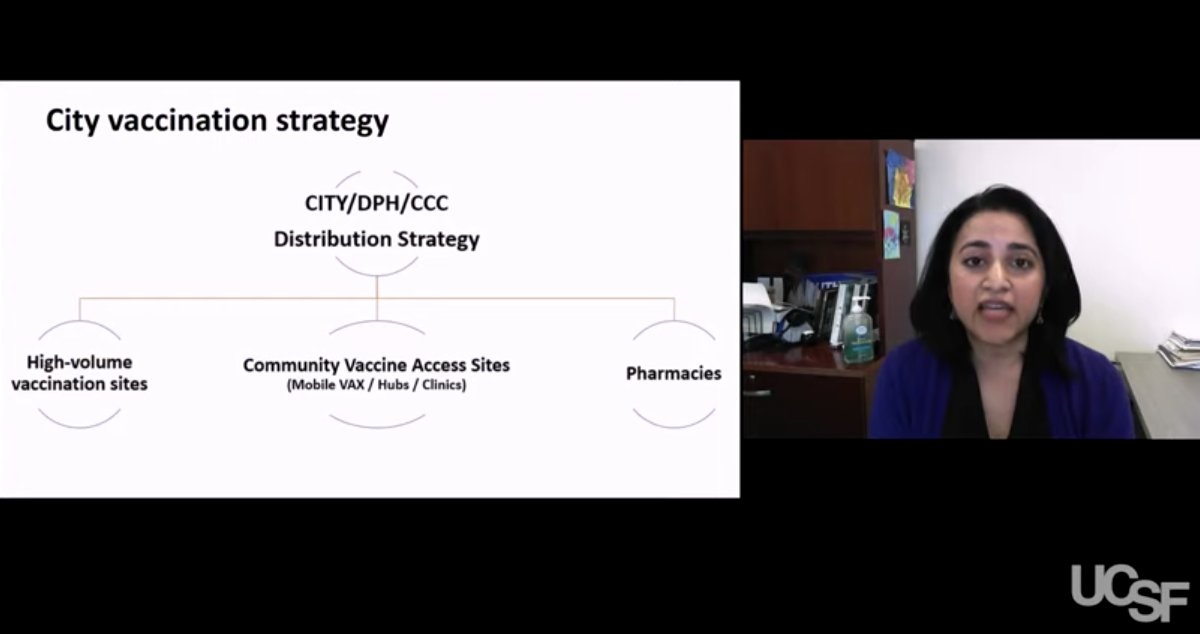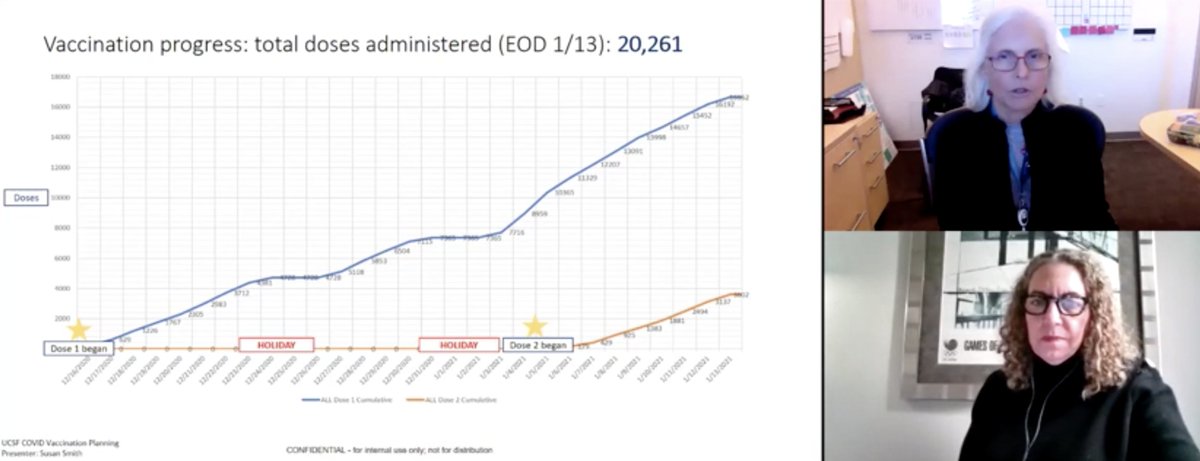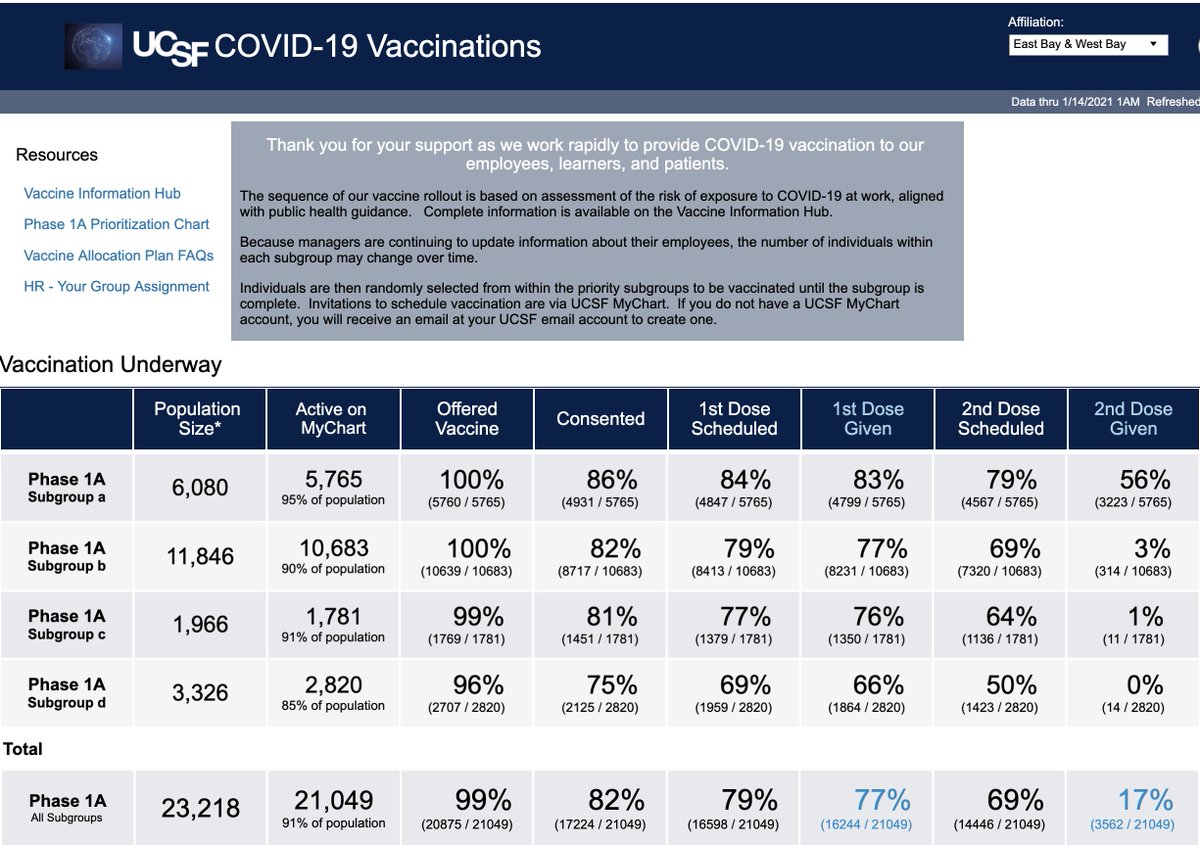
1/ Covid (@UCSF) Chronicles, Day 329
So many competing forces & trends. As dramatic as a thriller, but very decidedly – and tragically – as real as it gets. Everything's leading up to a decisive moment in late March, when we see if we’ve won or lost The Race vs. the variants.
So many competing forces & trends. As dramatic as a thriller, but very decidedly – and tragically – as real as it gets. Everything's leading up to a decisive moment in late March, when we see if we’ve won or lost The Race vs. the variants.
2/ More on that after update on local/nat'l situation. Not bad, tho the usual caveat – while far better than last mth, these are still very high case counts, test positivity rates, & hospitalizations – much higher than the peaks of last summer. Covid-wise, it’s still pretty hot.
3/ @ucsfhospitals, 47 pts, 13 vents (Fig L) – I'm still concerned w/ plateau, but hospitalizations are a lagging indicator. Reassured that test positivity rates are falling – now 2.4% overall, down >50% over last month. Test positivity in asymptomatic pts: down to 1.4% (Fig R). 

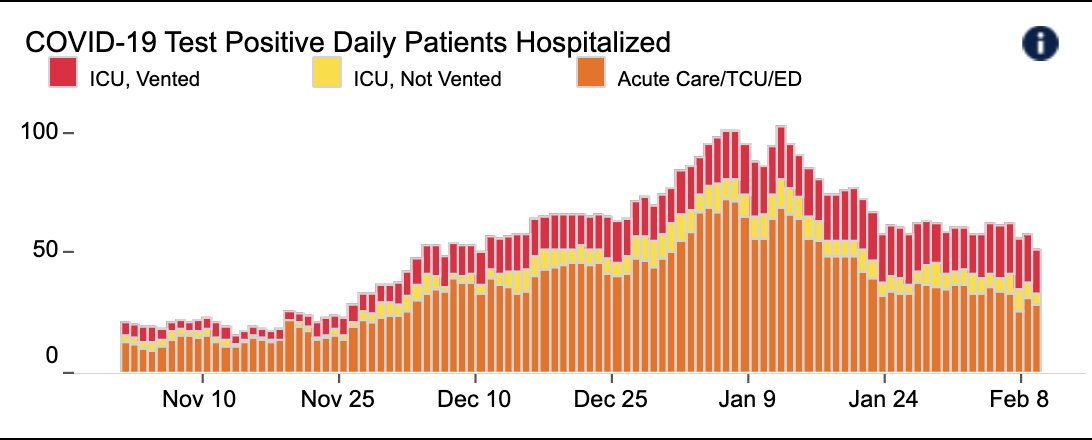
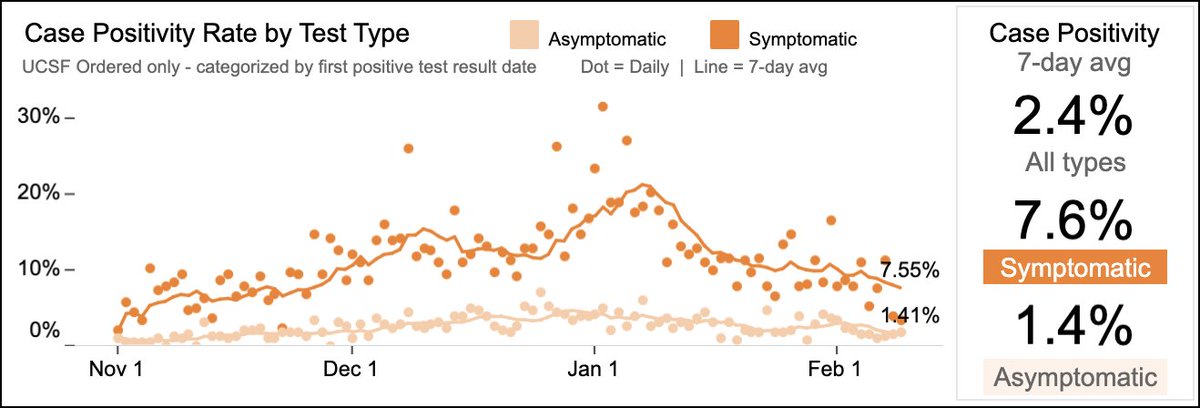
4/ San Francisco numbers are improving at similar pace, w/ cases down to 135, down ~2/3rds from peak (Fig L). Hospitalizations 148 – down ~40% from their peak (Fig R). Deaths stabilized: 346 – January's sharp uptick has now flattened. Test positivity 2.9%, down by half from peak. 

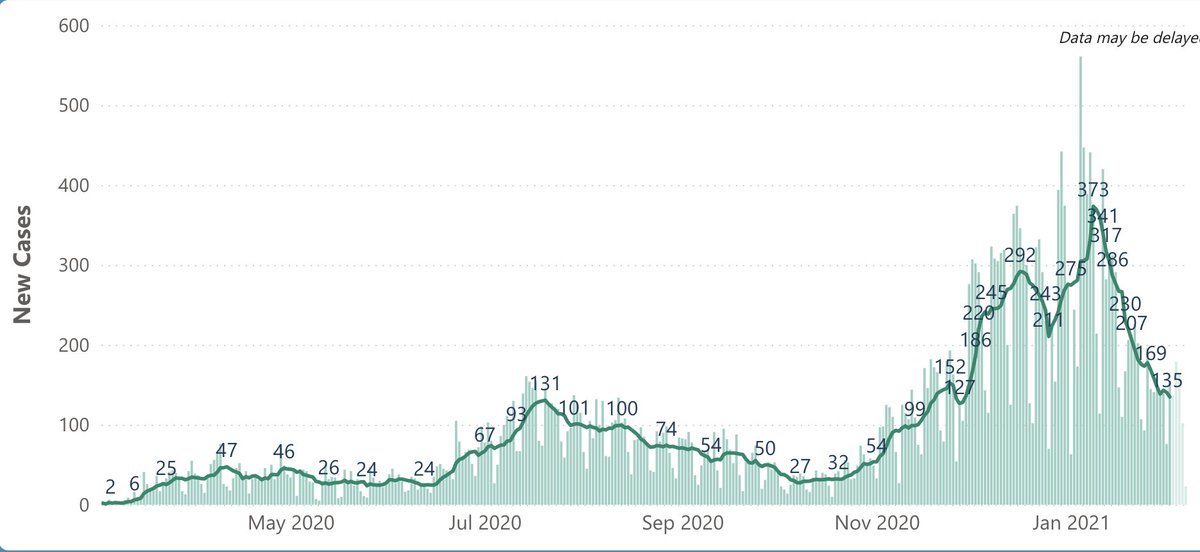
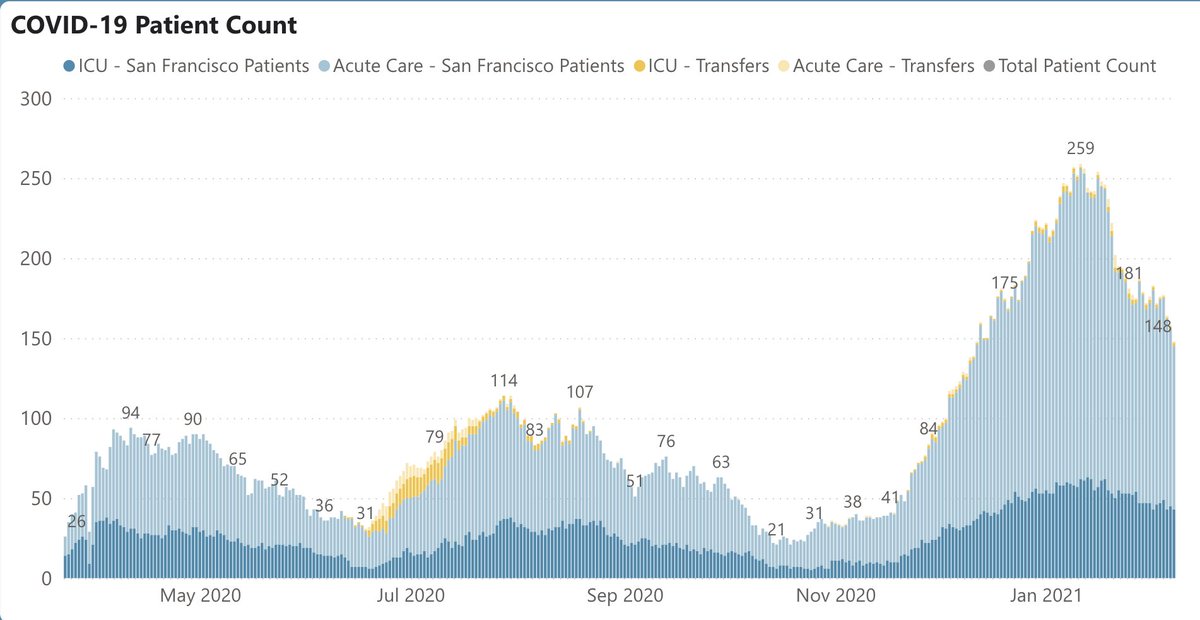
5/ CA also improved (Fig L), with deaths – which had been stubbornly stable – now finally trending downward. But that's still a lot of cases/deaths.
Across U.S.: cases are falling sharply in all regions (Fig R), but deaths haven't yet turned around: still ~3K/day. Take that in.

Across U.S.: cases are falling sharply in all regions (Fig R), but deaths haven't yet turned around: still ~3K/day. Take that in.
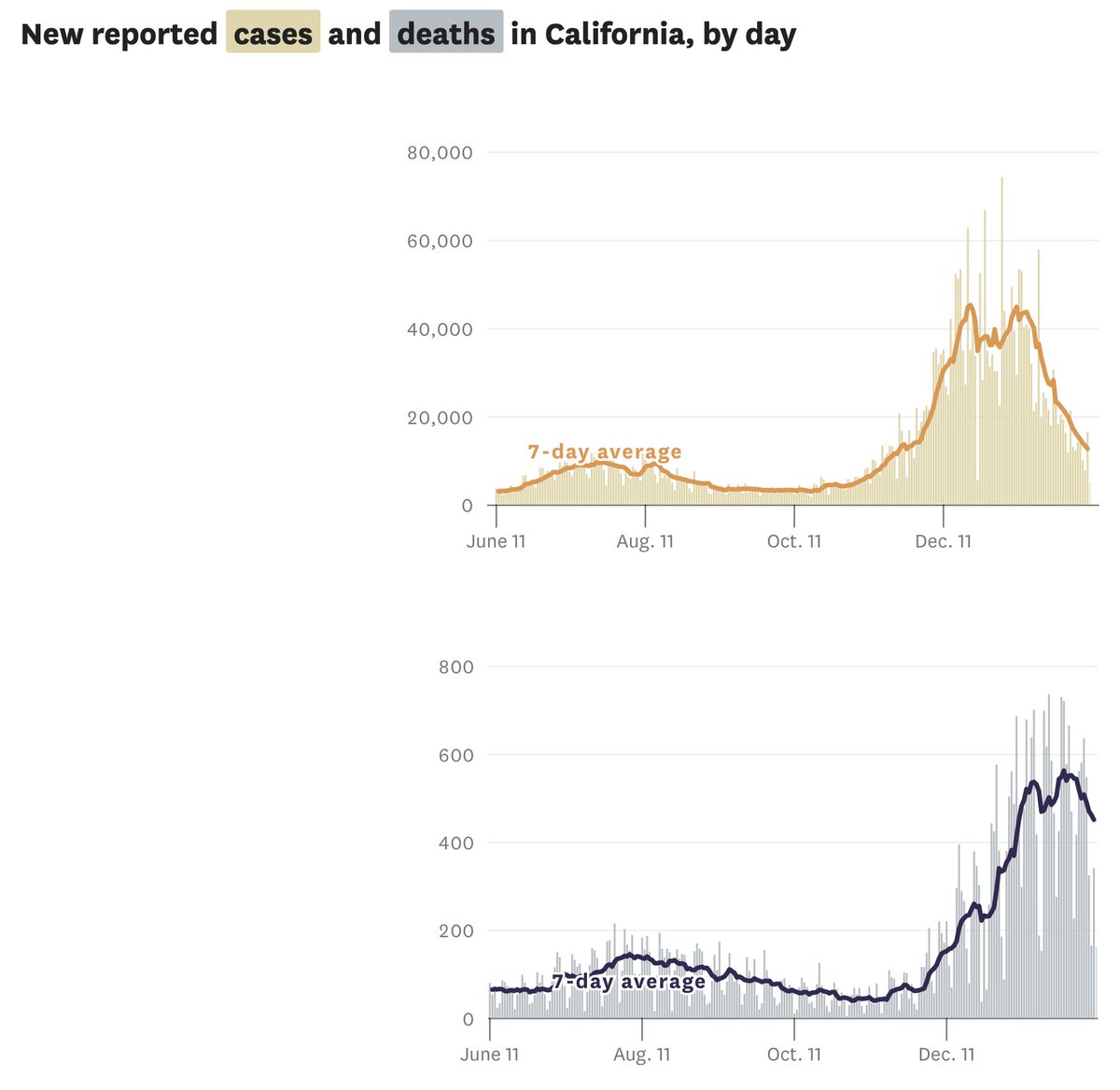
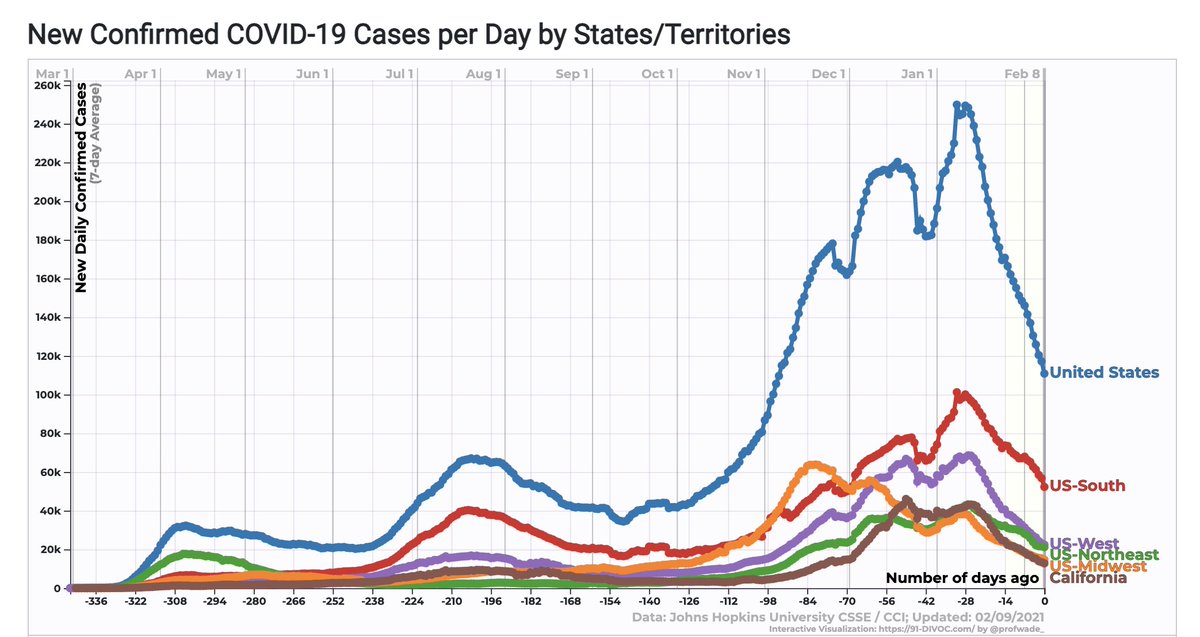
6/ The Race: If we can make it to late March in decent shape, we may be on road to “normal,” perhaps by the early fall. But if the variants win The Race, we’re likely to be hit by a 4th surge, accompanied by an enormous amount of suffering & death. The stakes couldn't be higher.
7/ There's lots of good news: on top of falling case counts, the vaccine roll-out has accelerated quite a bit; we're now at ~1.5M vaccinations/day. The scandalously low vaccine doses delivered-to-injected ratio (which was ~25-30% three wks ago) is now up to ~70% (Fig @business). 

8/ Now it’s mostly supply that’s holding things up, though equity issues are conspicuous & troubling. Blacks are ~half as likely to have been vaccinated (per capita) as whites
tinyurl.com/dlqcfdvk. Before ascribing that to “vaccine hesitancy,” it’s worth noting…
tinyurl.com/dlqcfdvk. Before ascribing that to “vaccine hesitancy,” it’s worth noting…
9/…that a recent @MorningConsult survey found blacks (~45%) weren't so far behind whites & Latinx (~60%) in interest in vaccination, which likely means that vaccine access and ease of navigating the process explain much of the difference, not just attitudes toward vaccination. 

10/ Supply is also an issue, but there are hopeful notes here too – manufacturing is being ramped up quickly, we’re getting more doses out of each Pfizer vial, and a third vaccine (J&J) seems likely to be approved & then rolled out in ~3 weeks. On top of that, the evidence…
11/ …continues to grow that a single mRNA vaccine dose may suffice in pts w/ prior Covid. We really must sort this out ASAP, since withholding 2nd shots in these patients could save tens of millions of doses, maybe more.
tinyurl.com/2mpfmi0y
tinyurl.com/2mpfmi0y
12/ With all of these positive trends, we should be heading toward a sunny future, w/ falling cases, rising vaccine rates, & prospect of herd immunity & “back to normal” soon. But – as always in Covid – it’s not that simple. First, in response to these trends, political leaders…
13/… are facing immense pressure to open up the economy. Ditto individuals, many of whom hear the messages about improvement & believe that they can let their guard down. tinyurl.com/r5ntghft It’s understandable, & yet it’s dangerous, because of the threat of the variants.
14/ The falling case rates have to be viewed in the context of the steady rise in the fraction of cases caused by B117 (UK) variant – the one that's, famously, ~50% more transmissible. So what would have been a reasonable response with the old virus (open up as case loads fall)…
15/ … may bite us with the new & improved variant. This is what they found in the UK (described @ 45:00 by Sir Patrick Vallance @uksciencechief in @UCSF grand rounds tinyurl.com/345q89z8) – the UK first discovered the variant & its increased infectivity when they noticed…
16/ …that the fall in cases that they expected w/ a given level of lockdown wasn't occurring – in fact cases were rising. As we open up, we’re giving the UK variant (or similar variants that may be lurking) a big opening. If there’s one thing we’ve learned about Covid…
17/ … it’s that the virus doesn’t miss an opening – & the UK variant is even better at its job.
Other variants are even more worrisome. Suspension of @AstraZeneca trial in South Africa because its vaccine was ineffective is worrisome. The UK variant…
tinyurl.com/2spwgq9p
Other variants are even more worrisome. Suspension of @AstraZeneca trial in South Africa because its vaccine was ineffective is worrisome. The UK variant…
tinyurl.com/2spwgq9p
18/ ….is scary, but since it’s responsive to current vaccines (which so far it is), we have the means to control it if we can vaccinate quickly. For the SA and Brazilian variants, we must do all we can to prevent them from gaining a toe-hold here – mostly by keeping cases down.
19/ So how to weigh the hopeful vs. scary news? I tilt toward the optimistic side: in 6-8 wks, w/ sufficient vaccine supply, a decent distribution system, & enough people vaccinated (plus prior infection), we should be able to tamp down a surge from the UK (or similar) variant.
20/ But we could easily blow it if we let down our guard.
Also on the good new side, the federal response to Covid has gone from abysmal to terrific, literally overnight (namely, between Jan 19th and 20th).
Also on the good new side, the federal response to Covid has gone from abysmal to terrific, literally overnight (namely, between Jan 19th and 20th).
21/ Under Biden and team, the press conferences are informative & transparent, and the programs and recommendations coming out of the @CDCgov are smart – a reminder of that organization’s importance when it’s allowed to do its job.
22/ I’m told we’ll soon be getting CDC recs re: what folks can & can’t do after they’ve been vaccinated, an increasingly salient question. The usual answer – “don’t change a thing” – seems unrealistic & may well discourage people from getting vaccinated, which isn't what we need.
23/ Personally, because I’m concerned about my unvaccinated wife, I haven’t changed my precautions re: masking/distancing (she & I discussed this @inthebubblepod tinyurl.com/457ukvep ). But I did get a haircut, will see the dentist, and – after infection rates fall – I’ll fly.
24/ There’s light at the end of the tunnel if we can just keep up safe behavior for 1-2 more mths while we hustle to get people vaccinated. If we get it right, “normal” might be 6 months away. If we don’t, it’ll be winter or later, with far more pain & deaths to mark our failure.
• • •
Missing some Tweet in this thread? You can try to
force a refresh


